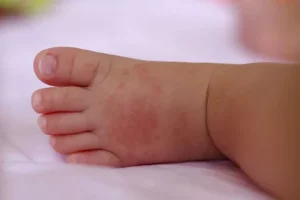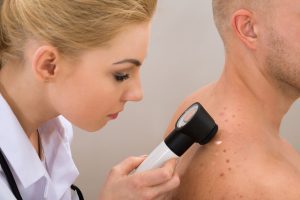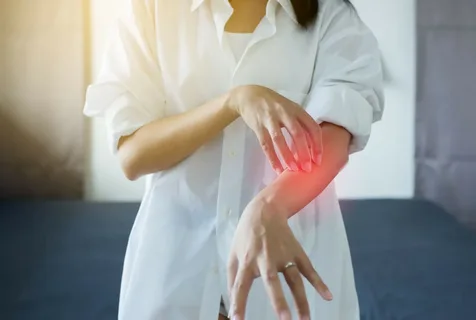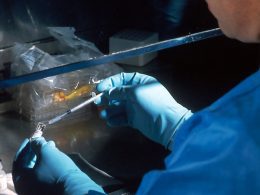Introduction
Rashes are a common skin condition that can range from mildly irritating to potentially serious. While many rashes are harmless and may resolve on their own, it’s essential to recognize when a rash may indicate a more significant underlying issue. Understanding the warning signs associated with rashes can help you determine when it’s time to seek medical attention. In this comprehensive guide, we’ll explore various types of rashes, their potential causes, and when you should be concerned. Explore more about (Risk and Solution of Nighttime Itching)
Types of Rashes
Rashes can manifest in various forms, each with its own set of characteristics and causes. Understanding the different types of rashes can aid in identifying the underlying issue. Some common types of rashes include:
1. Contact Dermatitis
Contact dermatitis occurs when the skin comes into contact with an irritant or allergen, leading to inflammation and redness. Common triggers include certain chemicals, plants like poison ivy, and metals such as nickel.
2. Atopic Dermatitis (Eczema)
Atopic dermatitis, commonly known as eczema, is a chronic condition characterized by dry, itchy skin and inflammation. It often presents as red patches on the skin, which may be accompanied by scaling or crusting.
3. Psoriasis
Psoriasis is a chronic autoimmune condition that results in the rapid growth of skin cells, leading to the development of thick, red patches known as plaques. These plaques are often covered with silvery scales and can be itchy or painful.
4. Heat Rash
Heat rash, also known as prickly heat, occurs when sweat becomes trapped in the sweat ducts, leading to irritation and inflammation. It typically presents as small, red bumps or blisters and is common in hot, humid climates.
5. Shingles
Shingles is a viral infection caused by the varicella-zoster virus, the same virus that causes chickenpox. It manifests as a painful rash that usually appears as a single strip of blisters on one side of the body.

Warning Signs to Watch For
While many rashes are benign and may resolve on their own, certain warning signs indicate a need for medical attention. If you experience any of the following symptoms along with a rash, it’s essential to seek prompt medical care:
1. Severe Itching or Pain
Persistent itching or pain that is severe or does not improve with over-the-counter remedies may indicate an underlying issue that requires medical evaluation.
2. Rapid Spreading or Worsening
If a rash spreads rapidly or shows signs of worsening, such as increasing redness, swelling, or blistering, it may be a sign of infection or allergic reaction.
3. Presence of Fever
A rash accompanied by fever, especially in children, could be a sign of a systemic infection or other serious illness and warrants medical attention.
4. Difficulty Breathing or Swallowing
In rare cases, a severe allergic reaction known as anaphylaxis can occur, causing difficulty breathing or swallowing, swelling of the face or throat, and a rapid pulse. This is a medical emergency and requires immediate treatment.
When to Seek Medical Attention
If you experience any of the warning signs mentioned above or are uncertain about the cause or severity of your rash, it’s crucial to consult a healthcare professional. A dermatologist or primary care physician can evaluate your symptoms, provide an accurate diagnosis, and recommend appropriate treatment options.

Treatment and Management
The treatment of a rash depends on its underlying cause and severity. In many cases, over-the-counter remedies such as moisturizers, antihistamines, or hydrocortisone creams may help alleviate symptoms. However, if the rash is caused by an infection or underlying medical condition, prescription medications or other interventions may be necessary.
Prevention Tips
While not all rashes can be prevented, there are steps you can take to minimize your risk:
- Avoid known irritants or allergens that trigger your rash.
- Practice good skincare habits, such as moisturizing regularly and avoiding harsh soaps or detergents.
- Wear protective clothing and sunscreen to shield your skin from environmental factors such as sun exposure.
- Seek prompt medical attention for any unusual or concerning symptoms.
Common Rashes
| Rash Type | Characteristics | Common Causes |
|---|---|---|
| Contact Dermatitis | Redness, inflammation, itching | Chemicals, plants (e.g., poison ivy), metals (e.g., nickel) |
| Atopic Dermatitis | Dry, itchy skin, red patches, scaling or crusting | Genetic predisposition, environmental triggers |
| Psoriasis | Thick, red patches with silvery scales, itching or pain | Genetic predisposition, immune system dysfunction |
| Heat Rash | Small, red bumps or blisters, itching or discomfort | Hot, humid climates |
| Shingles | Painful rash with blisters, typically in a single strip on one side of the body | Reactivation of varicella-zoster virus (chickenpox virus) |
Conclusion
In conclusion, while rashes are a common occurrence, it’s essential to pay attention to warning signs that may indicate a more serious underlying issue. By understanding the different types of rashes, their potential causes, and when to seek medical attention, you can take proactive steps to protect your skin health. Remember, if you’re unsure about the cause or severity of your rash, don’t hesitate to consult a healthcare professional for guidance and treatment.












